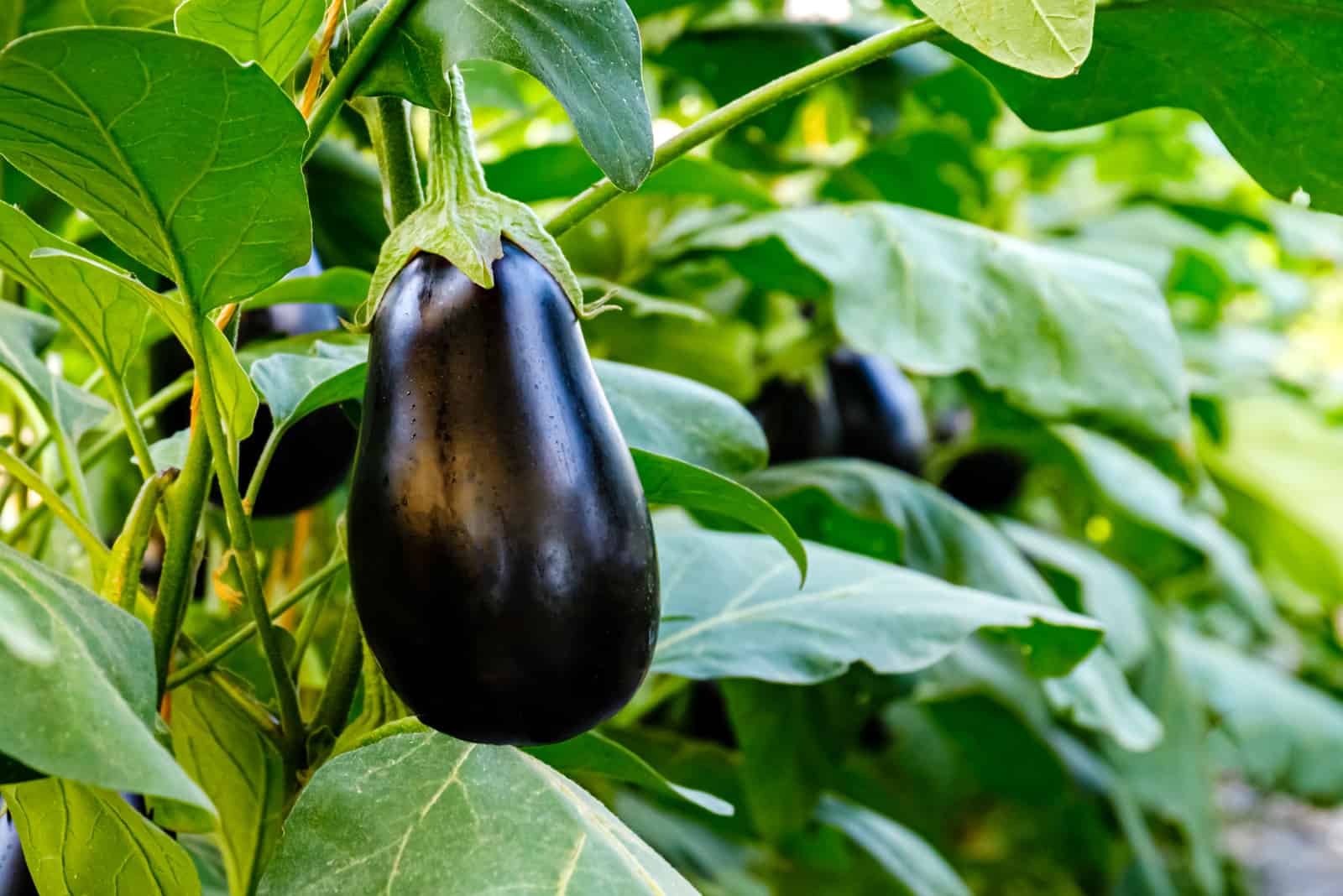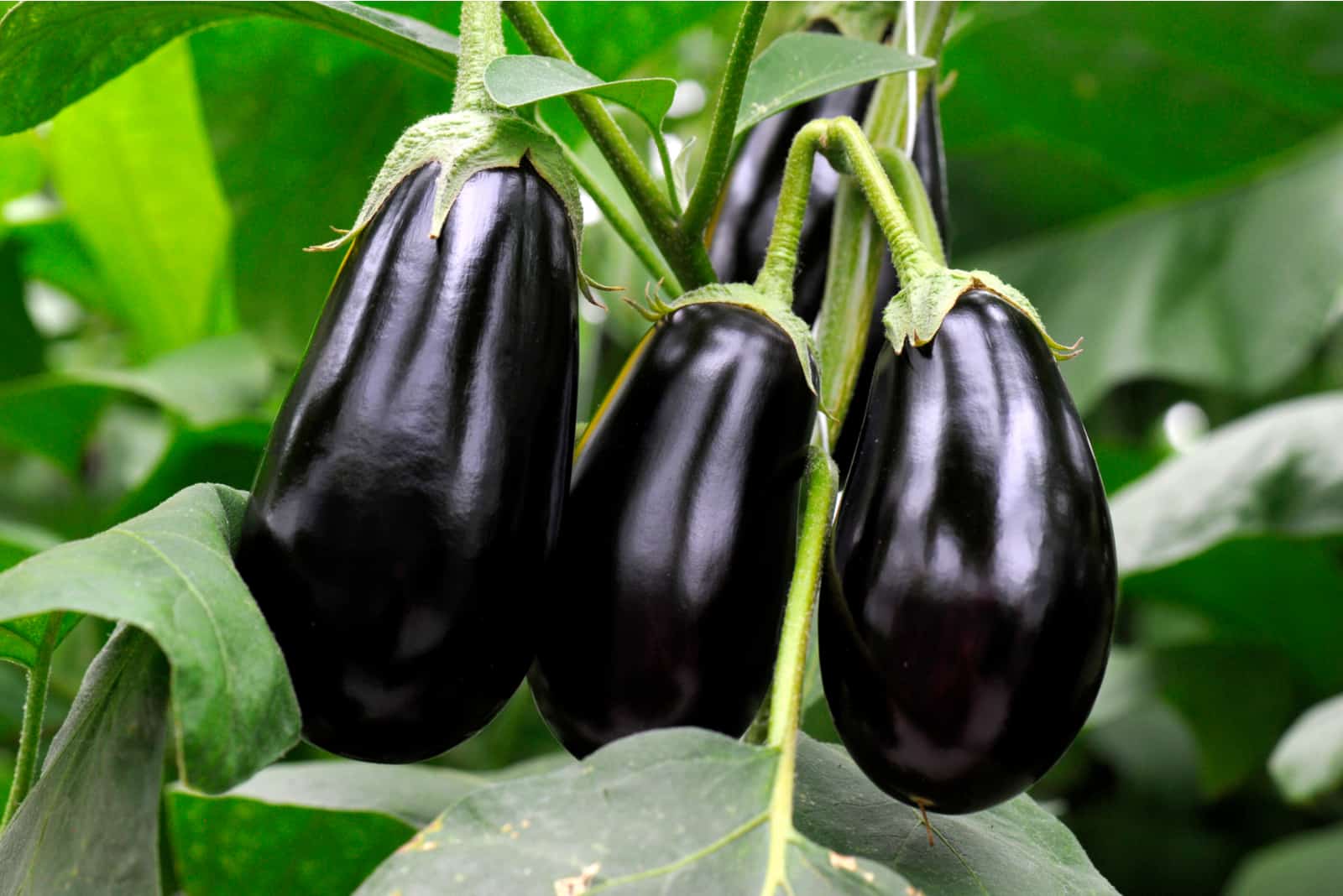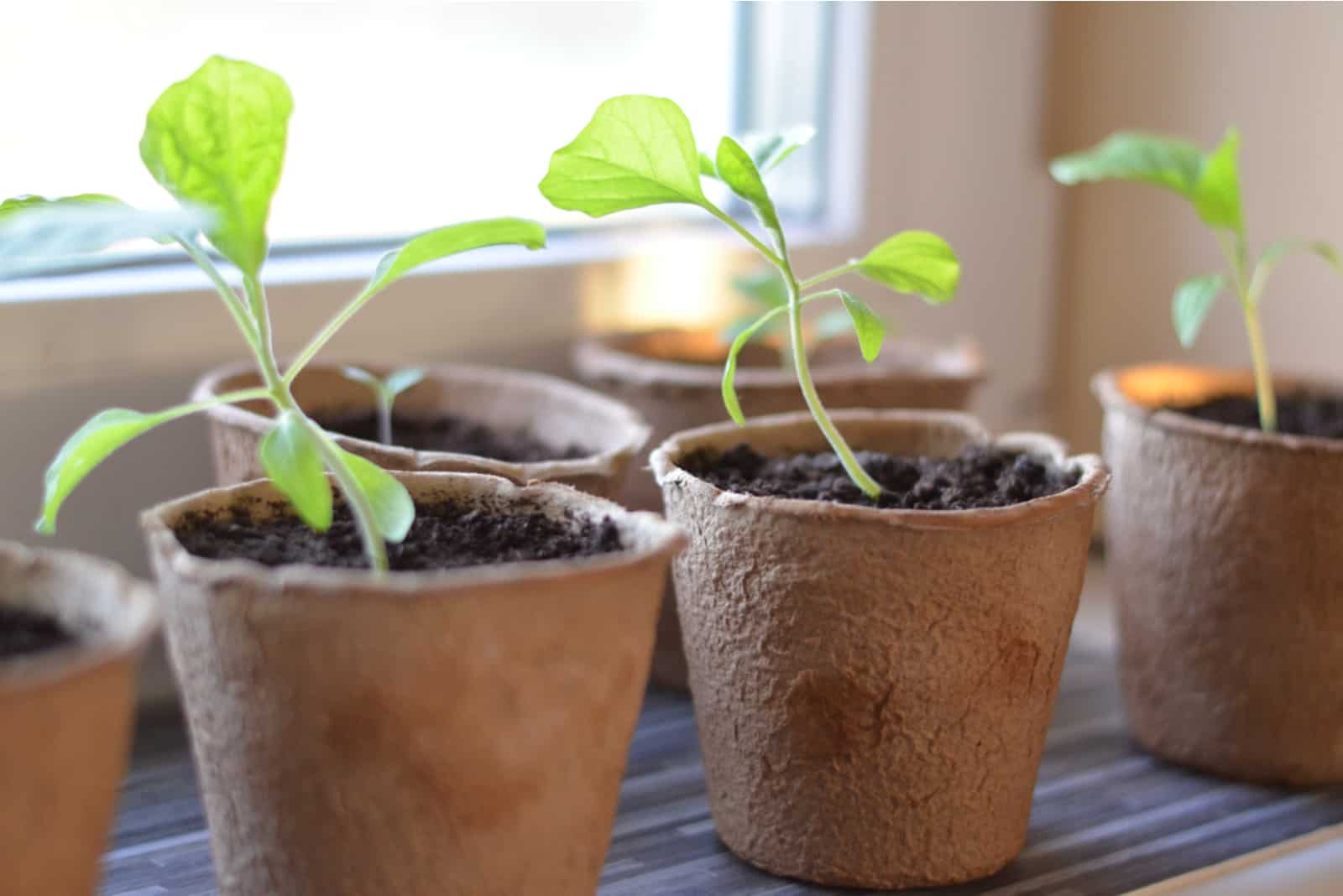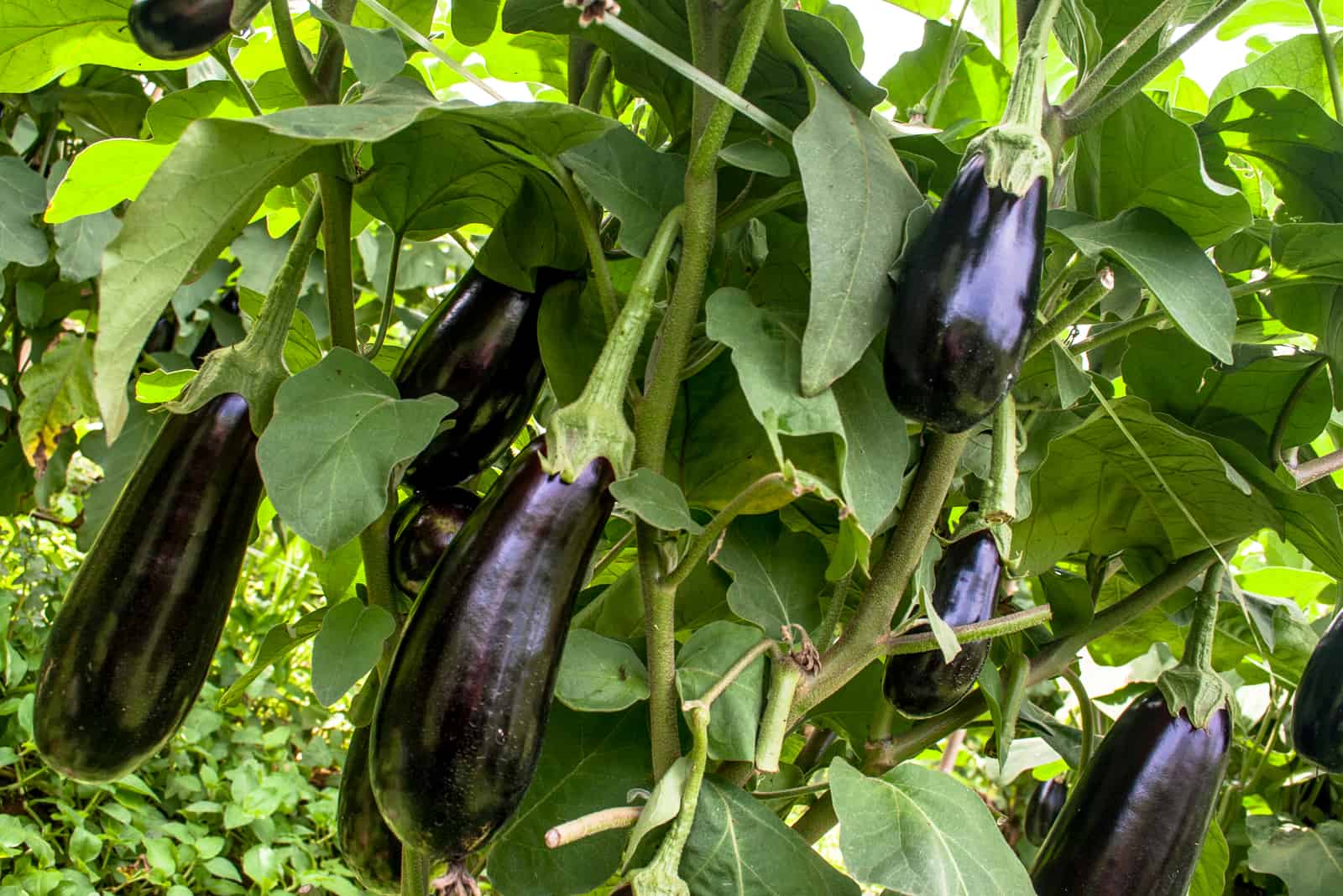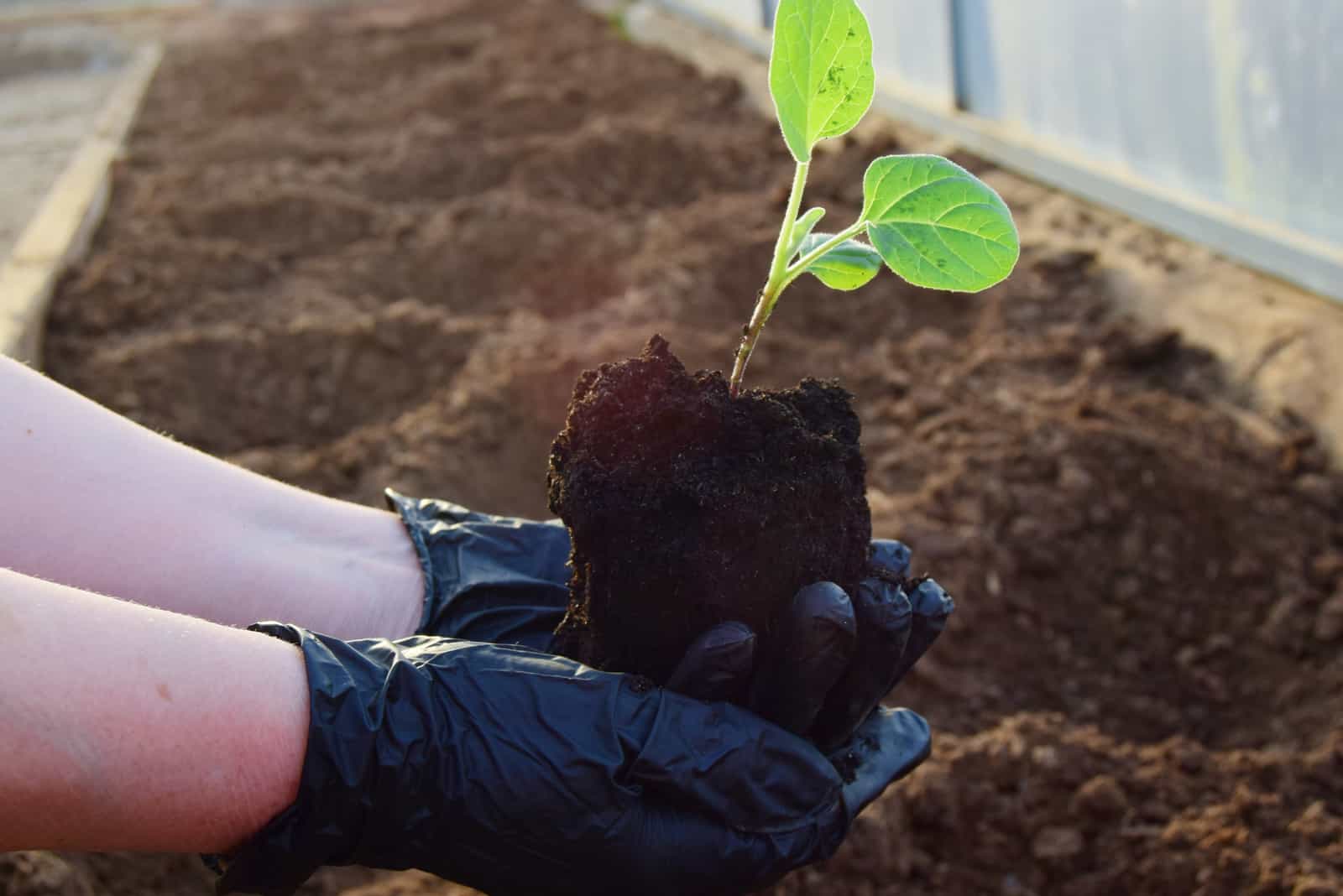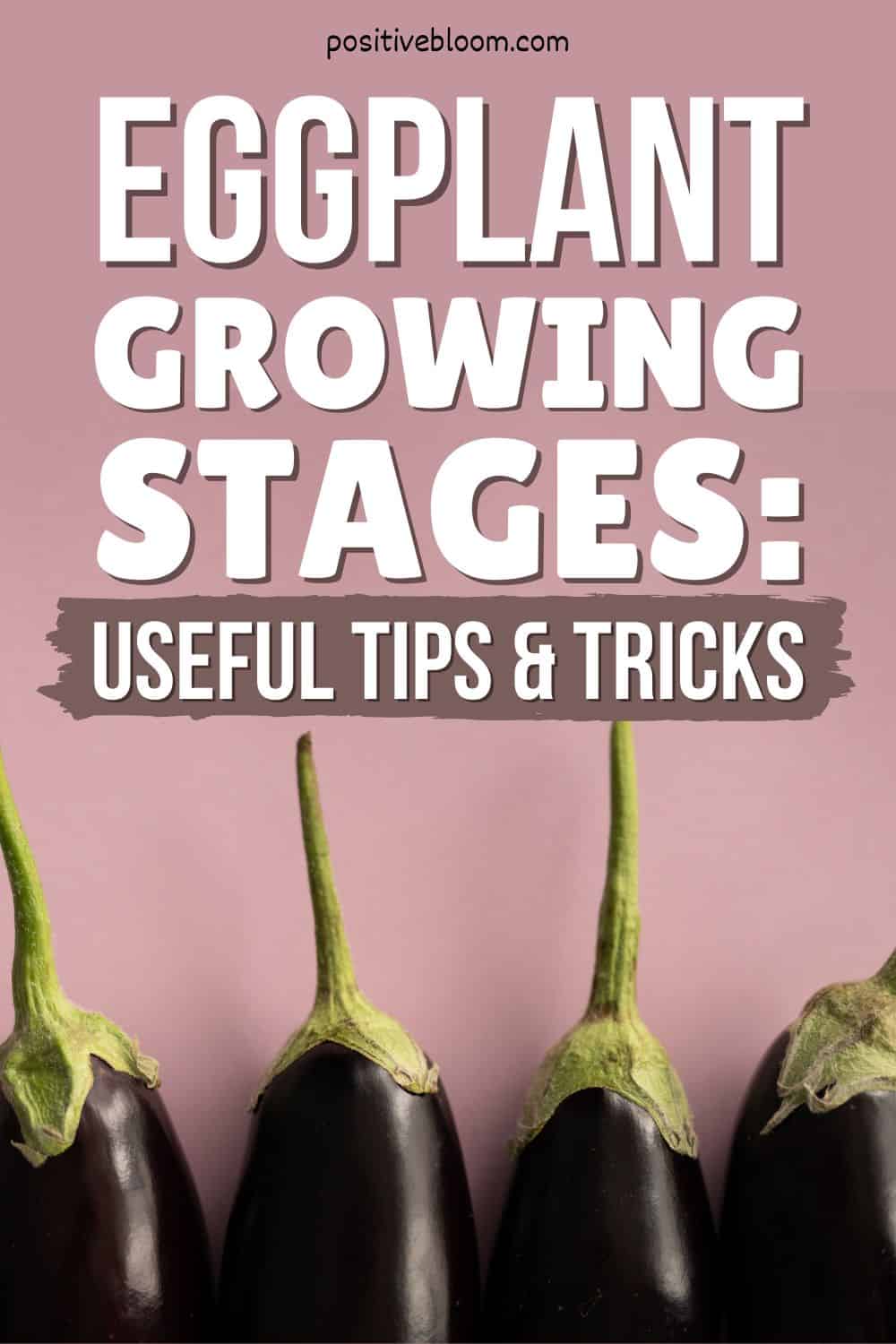Let’s talk about one of the most exotic vegetables, the eggplant!
This nutritious veggie has a sweet flavor and a bitter aftertaste. Every vegetable garden should have at least one eggplant, mainly because it is extremely beneficial to our health and a great source of minerals and vitamins that help digestion and increase brain function.
In the US it is grown as a perennial crop, while in other regions it is usually grown as an annual plant. Eggplants, also known as Solanum Melongena, grow the best in USDA hardiness zones 9 to 12.
It is important to be familiar with the growing stages of each vegetable, just so you can know when to harvest, how to provide the best plant care, and also deal with certain issues.
We’ll go through each of the eggplant growing stages to see how the plant changes during each stage.
What Are The Eggplant Growing Stages?
Eggplants, also known as Aubergine, belong to the family known as Solanaceae, or the Nightshade family. No matter the region in which you are growing eggplants, all the eggplant growing stages consist of:
• Sowing the eggplant seeds
• Seed germination
• Eggplant seedlings
• Growth of adult plants
• Flowering
• Eggplant fruit production
• Harvesting
Now, let’s go through the stages and see how the plant looks at each of these growth stages.
1. Sowing The Eggplant Seeds
You can recognize eggplant seeds by their unique white-brown color and smooth texture. They are also small in size and have a circular shape.
It is important to sow the seeds in warm soil, which is why almost all gardeners start their eggplants indoors; so that they can extend the growing season.
However, you can also continue growing your eggplant in a container or sow the seeds directly into the soil.
You can get seeds from a mature eggplant because one fruit can produce about 40 viable seeds. This way, you won’t have to spend money on seeds — just save the ones from your eggplant!
How To Start An Eggplant Indoors
1. You should start the eggplant seeds 10 weeks before the last frost date.
2. Plant the seeds 1/4 or 1/2 an inch deep in the container or flats. They should be spaced approximately 4 to 5 inches apart.
3. Water the seeds after planting and cover the top of the container with plastic wrap to retain moisture.
4. The seeds should germinate in around 5 days.
5. Keep the pots in a sunny location — they should get about 12 hours of direct sunlight during the day. If there is no direct sunlight in your area, then invest in grow lights.
6. Transplant the seedlings into larger containers if they outgrow their previous containers.
7. The seedlings should be transplanted outside to the garden once the temperature reaches 60 degrees Fahrenheit.
Tips For Growing Eggplant Plants In Containers
• If you don’t have a vegetable garden, then there is no other option than to grow eggplants in the containers. Luckily, they are easily grown and fruit-bearing, even in containers!
• The pots should be at least 12 inches deep and across. Choose smaller eggplant varieties if you plan to grow them in containers.
• Use nutrient-rich soil and keep it moist throughout the growing season.
• Apply fertilizers every other week — you can use fish emulsion or organic compost.
• Keep them in a sunny and warm place. You can easily bring them back indoors if the temperature drops.
• You can provide them with some type of support as they grow.
2. Seed Germination
The seeds should germinate in the first two weeks, though this can vary between different eggplant varieties. In order for germination to occur, the soil should be moist and warm.
If you notice little sprouts emerging from the soil, you’ll know that the germination has been successful!
Sometimes it may take longer if you have sown less viable seeds.
3. The Eggplant Seedlings Stage
As the little sprouts continue developing and producing more and more leaves, you will get to the seedling eggplant growth stage!
During this stage, you will still have to take good care of your young plant as they are still fragile and can be harmed easily.
Watering requirements depend on the humidity and temperature — I usually water them thoroughly twice a week, though I know that some people water them twice a day! They must have really dry air.
If you notice that your seedling starts looking leggy, slow down with the watering.
Once your seedling has at least four leaves, it’s time for transplanting. It will usually take about ten weeks for seedlings to be ready for transplantation.
Be careful not to transplant your seedlings too early, though, because the cold weather and soil temperature might stunt their growth.
Bear in mind that you should grow them in soil that is rich in organic matter, so you can start adding fertilizers at this stage. You should also add mulch, which helps with water retention and weed growth prevention. They thrive when the soil pH is between 5.5 to 6.8 and in full sun.
How To Transplant Eggplant Seedlings Outside
• First off, you should take into consideration where to plant eggplant seedlings — choose a sunny part of your garden with well-draining and nutrient-rich soil. Also consider companion planting with nasturtium.
• Warm the soil before transplanting by laying black plastic sheets or row covers on the planting beds. Keep them on for two weeks.
• You can transplant the seedlings two or three weeks after the last frost or wait until the temperature reaches 60 degrees Fahrenheit. It is important not to expose the seedlings to any danger of frost as low soil temperatures and cold weather can harm the seedlings.
• Dig a hole twice as large as the root ball of your seedling — this refers to the width and depth. Water it before putting in the seedlings.
• You can also add fertilizer to the bottom and light compost to the top of it. This is done because eggplant varieties absolutely love nutrients!
• Place the seedlings in the soil at approximately the same depth they were growing in their containers.
• Lightly water the seedlings after transplanting.
• You should also put something to support the plant as it grows, like a stake.
• The seedlings should be spaced about 24 to 26 inches apart in rows separated approximately the same distance.
• You should add row covers to protect these young plants. However, you should be sure to cover the eggplants in such a way that insect pollinators can still get close to them.
4. Adult Plant Stage
Congratulations, your plant is now a grownup!
However, it will still continue growing and developing, but you will probably spend the most time and energy during this growth stage compared to the others.
The stem will establish and numerous branches with leathery leaves and an oval shape will grow from it, though some varieties of eggplant have hairy leaves with spikes at the top. They usually grow from 2 to 4 inches tall, though this also depends on the variety.
It can take your plant between 70 to 120 days to reach this mature stage of eggplant growth, but, you guessed it, this also depends on the variety!
At this stage, staking is necessary for supporting their growth as they will soon start producing fruit. I swear that my home garden is full of stakes at this point, but I just love eggplants so much!
Continue with your regular watering and fertilizing schedule, especially at this stage because they need a lot of nutrients to produce fruit.
5. Flowering Stage
Once they have reached maturity, eggplant plants will start producing flowers, and trust me, your garden will look absolutely stunning at this point!
The flowers are shaped like stars, and due to their purple color could definitely be used for ornamental purposes.
Nonetheless, these eggplant flowers are self-pollinating, which means that they have both male and female organs and the eggplant will be produced in the female part. However, cold weather can prevent pollination from happening, which is unfortunate because no pollination means no fruit.
To encourage fruit production, you should use potassium-containing fertilizers as potassium is one of the necessary nutrients for the development of these black beauties.
6. Eggplant Fruit Production
Now the moment that we have all been waiting for! The formation of the delicious edible fruits. From the purple flowers you will obtain purple fruit, though the color of eggplants depends on the variety in question — they can be striped, black, and even white!
If you are into growing a gothic garden, then you should definitely plant the Black Beauty eggplant variety.
Eggplants usually grow 7 to 10 inches long once they mature. They have thick glossy skin filled with antioxidants that are super beneficial to our health. It usually takes 50 to 80 days for an eggplant to fully develop.
You should be on the lookout for pests and diseases, especially at this growth stage, as they tend to invade eggplants!
7. Harvesting
The final stage of this plant’s growth is harvesting eggplants. It’s finally the time to harvest these little babies and cook up some delicious recipes!
One of the easiest ways to tell that eggplants are ready to be harvested is thick, glossy skin and a firm texture.
If you harvest them young, that’s also fine — and some say that they even taste better!
If you have found the one eggplant variety perfect for your taste, you can always leave a couple of fruit attached to their stem and let them produce seeds. They usually grow quite large and with dull skin that feels kind of soft to the touch.
How Do You Harvest An Eggplant?
You should use pruning shears or a sharp knife to cut the stem above the top of the fruit. Don’t cut them too short as it could encourage rotting.
One eggplant plant can produce about four eggplants, so get ready for some hard work if you planted numerous plants!
How To Store Eggplants
You can store the eggplants in a dry place with good air ventilation and a somewhat warmer temperature of around 50 degrees Fahrenheit. It isn’t recommended to keep them in the fridge as the cold can harm them, however, you can put them in a plastic wrapper to protect them from the cold.
If you are looking for long-term storage, the freezer is fine.
Growing Eggplants: Common Issues
It’s always exciting to grow another vegetable from the seeds and wait for the delicious fruit to start growing. However, dealing with various pests and diseases that can affect your veggie is less fun.
These are always annoying, and you have to learn some tips and tricks in order to save your plant from them.
Sadly, your eggplant is not a particularly hardy plant so you might end up dealing with a pest infestation at some point, most commonly aphids, and also diseases like Early blight.
We are going to cover them one by one so you’ll be able to protect your plants if the worst should happen.
Flea Beetles
Flea Beetles are pests that attack your young plant and seedlings. They leave small holes in the leaves that can prevent growth. These little annoyances can also infest mature plants and munch on their delicious fruit, which would ruin your harvest!
To prevent them from invading your eggplants, use row covers. If they have already attacked your plant you can use insecticides to control them.
Aphids
Aphids are common pests that invade eggplants. In fact, there are two aphids varieties — the cotton aphid (Aphis gossypii) and the green peach aphid (Myzus persicae) that are frequent visitors of eggplants.
They usually hide under the leaves and suck their nutrients. The leaves will start to turn yellow if this happens, which is usually a sign of pest infestation.
The main problem is that the aphids secrete a sticky fluid called honeydew, which can encourage the formation of mold. A moldy eggplant is never good!
You can use insecticidal soap and commercial pesticides to treat them, though companion planting is a great option to fight aphids more naturally.
Cutworms
Cutworms are tiny pests that absolutely love munching on the eggplant seedling. They will eat up the stem of the plant and prevent further growth and development.
It is kind of tricky to get rid of them as they are mostly active at night, so you might not even notice that they have infected your plants in the first place.
However, if you do notice that the seedling is leggy, check for any cut-off pieces on the ground. To prevent cutworms, use diatomaceous earth and spread it around the base of your plant.
Stink Bugs
Stink bugs are seriously the worst pests ever!
Aside from their unpleasant odor, they are regular invaders of members of the Nightshade family and can cause severe infections because they carry a lot of pathogens.
They leave dark-colored spots all over the fruit, which eventually turn yellow.
To prevent stink bugs from infesting your eggplants, remove the weeds around your plant and use insecticidal soap.
Hornworms
Hornworms are the baddies of all pests. They are huge so you can easily spot them, and they don’t even try to hide! They are just right there chilling and eating your eggplants!
They can literally eat the leaves and stems of your plant, which causes stunted growth and a poor harvest.
To get rid of them, use organic pesticides.
For more information, click on this video:
Blossom-end Rot
Now we are going to switch to diseases.
At some point, your eggplant plant will begin to produce the flowers from which the fruit develops. At this point, any dark patches at the end of your fruit are usually an indication of blossom-end rot.
This is a condition caused by a lack of nutrients in the soil, especially calcium.
To avoid this, I recommend fertilizing your plants and ensuring that the soil is always well-drained. Remove any damaged fruit and avoid using nitrogen-based fertilizers in large amounts.
Early Blight
Early blight is a disease caused by a fungus called Alternaria solani. It leaves black spots all over the leaves and makes your entire plant wilt. As time goes by, early blight will spread to other parts of your plant, and may even infect nearby plants.
If you notice any signs of Early blight, immediately apply a fungicide. It’s easier to treat this disease in the early stages.
Cercospora Leaf Spot
Cercospora leaf spot is another fungal disease, and it is caused by Cercospora melongenae.
This fungus works a bit differently — it appears at the lower part of the plant and slowly starts spreading upwards. Once it reaches the leaves, you might notice small light-brown circles on them.
The leaves curl and dry over time and then fall on the ground, which is a problem because the fungus can survive and spread easily.
Cercospora leaf spot is probably the disease that is the hardest to treat. It is important to space your plants properly in order to make sure there is enough airflow. You should also water the plant at its base.
If your eggplant has been infected, you should apply fungicide and pray!
Powdery Mildew
Powdery mildew is a fungal infection that causes white spots and patches on the surface of the leaves, as well as overall drooping and yellowing. Foliage, stems, fruit, and flowers are commonly affected by this fungal disease.
Remove any damaged leaves or flowers and make sure your plant has enough sunlight and air circulation throughout the day. You can also use fungicide or a solution of baking soda and water to spray the plant.
Anthracnose Fruit Rot
Colletotrichum coccodes is a fungus that causes Anthracnose fruit rot. There are very few symptoms of this disease. At first, small sunken spots will appear on the fruit, and as time goes by they will get even larger and deeper.
It is best to dispose of any affected fruit. To prevent this disease, water regularly and add mulch.
Frequently Asked Questions
1. What are some other Eggplant varieties?
There are four classic Eggplant varieties that are widely grown. These include Little Fingers, Ichiban, Black Beauty, and Easter Egg. However, there are lots of different varieties that can be grown, such as bell-shaped eggplants (Black Beauty, Blacknite, Black Bell), small eggplants (bambino and little fingers), long eggplants (Slim Jim, Violetta di Firenze, Osaka Honnoga, Tycoon), and non-purple varieties (Rosa Bianca, Easter Egg, Louisiana Long Green, Alba).
2. What do eggplants need to grow?
The most crucial steps in the eggplant plant care guide are sunlight and soil. They need a lot of sunlight throughout the day to keep them happy and thriving! Eggplants are heavy-feeders, so they love nutrient-rich soil.
Give them an inch of water each week and add mulch to prevent weed growth. Stake them so that they have something to lean on once they start producing those delicious eggplants! Keep fertilizing them throughout the growing season, and always be on the lookout for pests and diseases!
3. How do eggplants grow?
Eggplants grow from seeds. First, you plant the seeds, which should germinate in the first two weeks. You will notice little leaves emerging from the soil, which are actually sprouts that will continue growing and developing. Once the seedling has about 4 leaves, it is time for transplanting.
Eggplants are usually started indoors because they cannot tolerate cold. Once the climate is warm enough they can be grown outdoors!
The seedling will continue growing until it reaches maturity. Then, the adult plant will start producing flowers that need to be pollinated.
Once pollination has occurred, fruit formation starts. After some time, the eggplants will ripen and be ready for harvesting!
Final Words
Eggplant is simply a must-have in every vegetable garden! Not only is this veggie packed with nutrients that are beneficial to your health, but it is also relatively easy to grow.
Just make sure that they get plenty of sunlight throughout the day and feed them with lots of fertilizers so they can produce their delicious fruit.
Bear in mind that the eggplant growing stages are the same wherever you plant them, so you can also use these tips and tricks to keep your eggplant plant happy and healthy!
Transplant your eggplant seedlings once the soil is warm and there is no danger of frost, and add mulch to prevent weed growth. Give them an inch of water each week and be on the lookout for annoying pests and fungi.
Until next time!
Like this post? Share or pin it for later!

